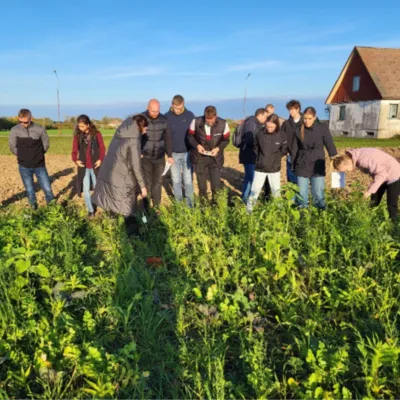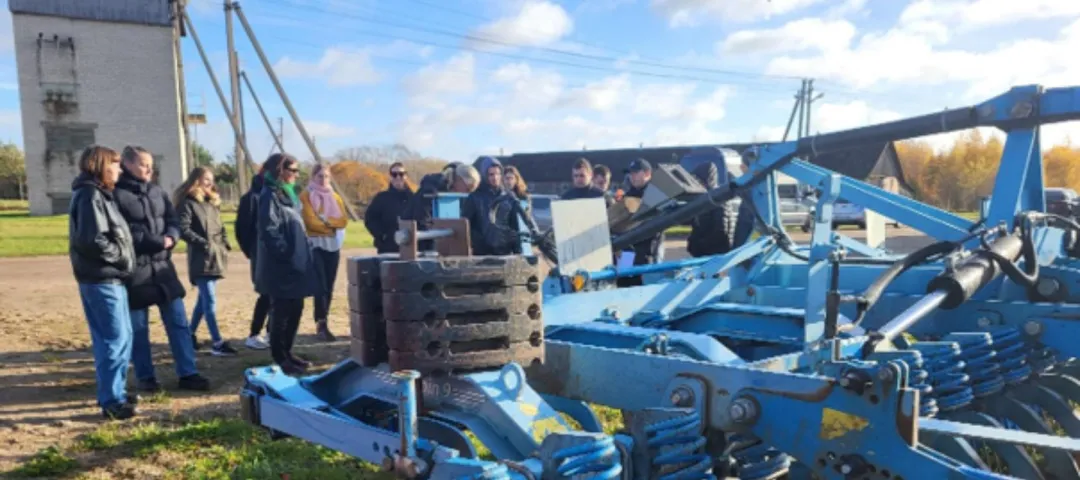General information
RDP Priority
- P1. Knowledge transfer and innovation
- P2. Competitiveness
RDP Focus Area
- 1A: Innovation & cooperation
- 2A: Farm’s performance, restructuring & modernisation
RDP Measure
- M16: Cooperation
Beneficiary type
- Operational group
Summary
The project ’Diversification of catch crops and use of multifunctional properties to increase soil sustainability and carbon sequestration potential and reduce fertiliser demand’ aimed to introduce innovative technologies for the diversification of catch crops and the use of their multifunctional properties on farms. The project team implemented trials, conducted soil tests, and assessed crop and flora health in addition to studying crop production and greenhouse gas emissions, before summarising the results and organising dissemination activities to share their findings.
Results
- The project developed and enhanced technologies for cultivating winter and summer catch crops grown in intercrops and post-crop systems.
- The production examples showcased during the project inspired other farms to adopt these practices, helping them enhance profitability through more sustainable farming methods that minimise environmental impact.

Promoter
Chamber of Agriculture of the Republic of Lithuania*
* The Project promoter/beneficiary is an EIP-AGRI Operational Group ©
Funding
RDP support: 174 286 (EUR)
EAFRD: 146 575 (EUR)
National/Regional: 25 866 (EUR)
Private/own: 1 845 (EUR)
Ressourcen
Links
Context
Lithuania’s climatic conditions are very favourable for growing a fairly wide range of summer and winter catch crops. However, only a few types of catch crops are used in practice, mainly white mustard and oil radish. This lack of diversification is compounded by a lack of research on the impact of these catch crops on soil sustainability, carbon sequestration potential, and fertiliser usage.
The Association of the Chamber of Agriculture of the Republic of Lithuania and its partners (the Vytautas Magnus University Academy of Agriculture, and the agricultural partners that are farmers Vida Daniulienė, Alvydas Samaitis, Česlovas Tallat-Kelpša, and Antanas Romikaitis, and the agricultural Companies Jogvila and Vėjeliškės lygumos) decided to explore the economic, agronomic and environmental benefits of diversifying catch crops.
They selected little-studied or unstudied winter plant species (hazel, bean and bast) that sequester significant amounts of carbon to explore different cultivation techniques, exploring how to integrate these varieties into existing agricultural systems in order to obtain multifunctional economic and environmental benefits.
Objectives
This project aimed to introduce innovative technologies for the diversification of catch crops and the use of their multifunctional properties on farms. The goal was to increase soil sustainability and carbon sequestration potential, as well as reduce greenhouse gas (GHG) emissions and the need for fertilisers.
Activities
The project was implemented in different stages.
The first stage involved:
- selecting the personnel responsible for the project implementation;
- preparing an information stand and publishing an information article; and
- selecting pilot fields for the project on farms and analysing cultivation techniques.
The second stage involved:
- installing and implementing project trials;
- conducting soil tests;
- assessing the impact of diseases and pests on the project pilot crops, conducting biometric measurements, and assessing segetal flora;
- conducting crop production studies;
- conducting GHG emissions studies;
- summarising test results and preparing publicity materials;
- organising publicity events to disseminate project results; and
- disseminating project information.
The third stage involved:
- submitting the final payment application and project implementation report to the National Paying Agency under the Ministry of Agriculture.
Main results
- The project developed and enhanced technologies for cultivating winter and summer catch crops grown in intercrops and post-crop systems. These will help farmers address problems related to soil degradation, biodiversity and GHG emissions more efficiently.
- The project assessed GHG emissions, sequestered carbon, and the need for fertiliser use, and performed an economic, agronomic and environmental assessment.
- The production examples demonstrated during the project encouraged other farms to implement a wider range of technological innovations and thus maintain and increase the profitability of agricultural activities through more sustainable farming, while reducing environmental impact.
- The project results were disseminated throughout the project at conferences, seminars, field days, discussion groups and other events. The project results provide direct benefits to farmers and broader benefits for the entire environment.
Key lessons
The implementation of this project was driven by the growing need to enhance carbon sequestration in farming. One promising approach is that of using catch crops with diverse compositions to provide various agricultural benefits. The development of additional solutions largely depends on stakeholders proposing innovative practices and integrating them into production through experimentation. Therefore, advancing technological research is essential to support the agricultural sector’s transition to climate-resilient, low-carbon technologies.
Edita Karbauskienė

